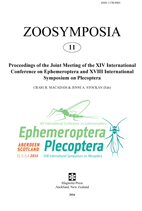Abstract
Habitat modelling provides a quantitative tool to predict scenarios in order to implement conservation measures and is therefore recognised as an effective method for managing running waters. Combining abiotic characteristics (e.g. substrate) and the results of hydraulic models (most commonly water depth and depth-averaged velocity), habitat models can be applied. Different models are available (e.g. CASiMiR, PHABSIM), all of which require preference (or suitability) curves for the species of interest. Choosing a species for habitat modelling requires sound knowledge of its ecology and distribution. The mayfly Baetis alpinus is a widespread and abundant alpine species and therefore a useful indicator species in the context of habitat modelling. Based on abiotic factors and abundance of the species, preference curves were established using polynomial regression. We present the sampling design and data processing for the establishment of a preference curve for the mayfly Baetis alpinus, including a review of its ecology. The application in habitat modelling is exemplified and discussed. Especially for high alpine environments, where fish are absent, the use of macroinvertebrates in habitat modelling enables to make comparable analyses of different flow rates.

